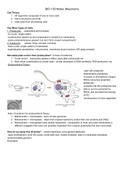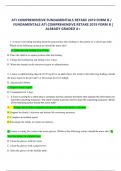Class notes
UofT BIO130 Study Notes
- Course
- Bio130 (BIO130)
- Institution
- University Of Toronto (U Of T )
-notes cover cellular & molecular mechanisms of DNA replication, transcription, and translation -summary of lecture slides and material discussed in class
[Show more]





